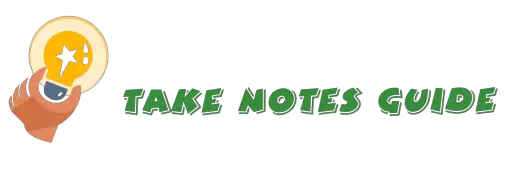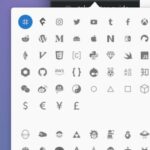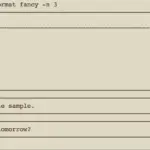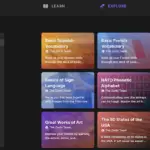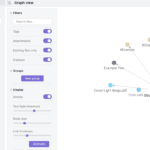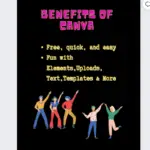I am exploring the possibilities to take fast notes, considering the advantage of taking fast notes. Is it possible to train ourselves to take notes quickly? Or can we evaluate if the learning effort for speed is worth our time?
How to take fast notes?
- Type away and speech dictation
- Texting and chat abbreviations
- Write in cursive
More Tips
- Premade questions to write less in class
- Keep your notes within a structured note template to avoid distractions
- Read faster first
- Take photos of the whiteboard to write less and focus more on understanding
I hope these 3 points and the 4 tips will help in your note-taking endeavor. Read on for more…
Type away and speech dictation
According to this debate or voting, more than 80 percent agrees typing is faster than writing. Depending on the subject, one may type to take fast notes, especially when one is a fast typer. Beginners may consider TypingClub. Evaluate your a free typing speed test such as How To Type with words per minute and accuracy report. But you may trade one set of advantages for another listed in Is It Better To Write Or Type Notes?
Alternatively, dictating or converting your speech to text instead of typing can be a faster way to take notes; Read here how to do it if you are interested. A web resource that can easily dictate our speech, including different languages is Dictation.io. This technique will also depend on the note-taker’s preference and situation. Please note that you may still have to proofread for errors and corrections. Those who are learning a new language or becoming a polyglot may consider a translator device.

Texting and chat abbreviations
The advantage of using texting abbreviations is leveraging our existing messaging apps chatting skills. However, it is limited in how much we can express complex textbook concepts with chat slangs. This piece lists more than 1500 chat and text abbreviations for the curious.

Emojis, symbols, stickers, and animated gifs can all be included in our modern notes for fun’s sake if relevant.
Write in cursive

Writing in cursive is fast, so much that it is faster than print along with other benefits according to this write-up. In my opinion, cursive handwriting enables one to write faster because most alphabets end with a tail carrying forward to the next without lifting the pen up from the paper. Take note of the exceptions letters such as ’t’. Cursive writings can be fast & casual and/or crafted beautifully, however, generally it is not taught in schools anymore and most people seem not interested in it anymore. It is up to you whether you want to put in the extra effort to learn cursive writing for taking fast notes.
Tip one: Premade questions to write less in class
The first type of questions can be just your core doubts on the chapter main points. The second type is the standard questions to be tested at the back of the chapter. The first type of questions is more versatile and applicable to any text of study. We just read through and take notes of doubts in questions format so later on we can listen and learn for answers from a class teacher or lecturer. The more comprehensive number of questions covered and answered later, the more complete information one can learn from this method, so be sure to ask away what relevant questions you can.
Your structured questions can contain these two questions types categories, and the more detailed questions or notes should be nested under broader questions. The root question may directly address the chapter title or objective. A natural note-taking resource that adheres to nested notes is the Gingkoapp format, below is the view of an example with questions tree here.
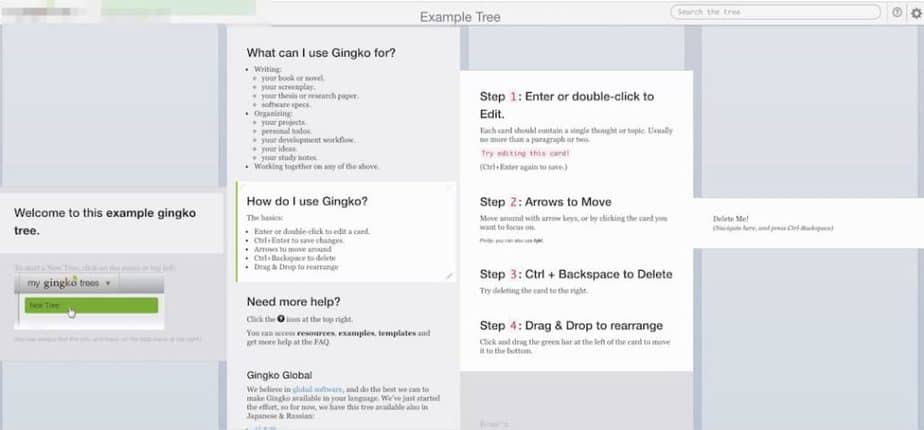
This method will not let you write faster, but premade questions may let you write less but more important answer notes when in class. Go for summaries and gist whenever possible.
Questions with answers selection
Very effective pre-made note structure may just require you to tick some boxes to clarify your doubts and understanding for points you wrote down and prepared beforehand for the class earlier at home or the night before. In this way, you may not have to distract yourself with busy scribbling but focus on listening and reviewing. This can be implemented on a normal note page or graded cards.
Learning platforms
Any flashcards platform that gamified or graded can be useful for helping students to learn. Good examples are Memrise and Plickers (Both are free for basic use). If you are adept at creating videos for learning, please consider Udemy and YouTube to share your knowledge for others’ benefit. The advantage of creating online courses is the potential to continuously reach out and easily accessible to more students moving forward, and not limiting to just one particular class session.

Tip two: Keep your notes within a structured note template to avoid distractions
This saves you from thinking, outlining, or drawing a structure from scratch every time you start taking notes in class. Concentrate on understanding the teaching first is the top priority. A template does not make you write faster, but it can remind and guide you to take the right notes faster. In other words, what use of taking the fastest notes if they are trivial or even of mediocre value? Another benefit of a structured note template is to keep you from distractions and focus on noting down the information you came for; Your template should be filled with useful notes at the end of each learning session so you know your time was not wasted in vain. It is even better if you prepare all the template notes for all the chapters before classes or lectures, and just ticks or adds more notes while focusing to learn from the speaker new information you might have missed out earlier. Clearly, a student will take faster notes without distractions than not.
Exercise to create notes for all chapters with a note-taking template:
Before a semester start, fill up all your questions in a note-taking template so you are prepared for the whole semester even up to the examinations. When you put down your notes now, you are also mentally conditioning by telling yourself what you hope and aim to learn and achieve for the coming months. If a subject has 15 chapters, can you fill up 15 class notes template beforehand?
An example of a template to use for each and every single chapter is the Evernote Class Notes template.
Another Evernote class notes for course template that includes objectives, homework, questions, and to-do lists can be found here. Also, an Evernote template, Eisenhower Matrix, that focuses on when to complete which tasks may be of interest to some.
Tip three: Read faster first
I have included this here because a reader can start taking summary notes sooner after he read the text much faster than usual. However, this is up to the reader to determine if he wants to pursue this training for speed.
According to this video author, he claimed he can read a book in a few hours. He recommends Spreeder; Reedy is a free Google extension we can readily use, and the science or research behind is based on the RSVP (Rapid Serial Visual Presentation); Conference paper (Beccue, Vila 2004).
The disadvantage with this method is that it is not suitable for certain studying purposes or reading situations such as certain difficult points that require much pondering and appreciation of literature.
Tip four: Take photos of the whiteboard to write less and focus more on understanding
With each photo, summarize in a sentence what this is about. Arrange all the photos on the same page if possible for review with a single glance. In this way, you may not have to copy everything you see or if you do not have to time to copy too much information. Instead, students should spend their time thinking and reflecting on the concepts and ideas taught and not focus on quickly duplicating the whiteboard before it got erased. The objective is to understand the concepts, not copying. And once we understood, we just have to make sure we memorize and able to recall at will any ideas to prepare for examination conditions. You may consider this Pass Exam Without Revision method. Though I recommend pre-class preparation, a good post-class study method is to go through all the whiteboard photos, then research and chat online or ask the teacher the next day to clarify all your doubts you noted down.
In essence: Write less and understand more.
Conclusion
While sometimes we may think taking fast notes is what we need, but is it? Whether it is taking faster or lesser notes, perhaps we can improve our smart note-taking skills much more effectively by focusing on logics (my personal recommendation is still to focus on logical understanding over all else) and associations?
Quality of notes takes effort e.g. premade questions and template prepared beforehand, and even learning cursive handwriting will require work.
Whichever strategy you choose, be kind and BOL.
Related Questions
Which are some fast launching note-taking apps?
- Pure Writer app
- Google Keep app
- Native phone note apps. These may sync on the cloud e.g. Xiaomi notes syncs on Xiaomi Cloud, much like Apple notes on iCloud.
Basically, we want a robust and minimalistic or simple app without much of the bells and whistles just for speedily typing out some ideas, especially if you take frequent notes through the day. These quick notes should be transferred to a more feature-rich note app eventually; Pure Writer has a Share to another App function that allows adding the note to Evernote directly. Remember to use the voice record or speech to text function available to take fast notes. Even Pure Writer app can type your voice with Gboard keyboard along with stickers, Gifs, and languages translation.
Are there any good pens for fast writing and other purposes?

You may wish to have a quick-drying pen if you write very fast, especially left-handers with ink smudging experience.

Stainless steel keychain with small 4.5” pen or Aluminium note case with mini pen and notepad. Portable convenience can be a significant factor for a pen. After all, what use of a pen if we cannot use it when we need it?

Durable space pen. Heavy-duty is what comes to mind. It is worth noting that this versatile pen can write in any angle including zero gravity, extreme temperatures, and even under water & over wet surfaces; Not surprising a commenter remarked he had this pen for 14 years, and survived the dryer & washing machine. This can make an excellent gift for fathers.

Environmentalists and modern note-takers may consider Rocketbook – A reusable notebook that can be scanned to the cloud. Rocketbook Mini for portability is also available.
